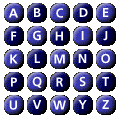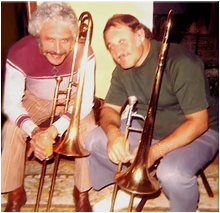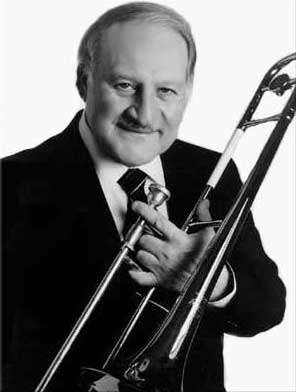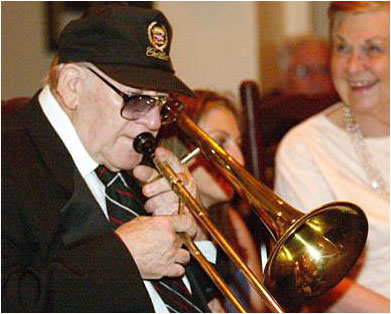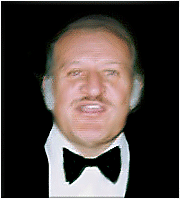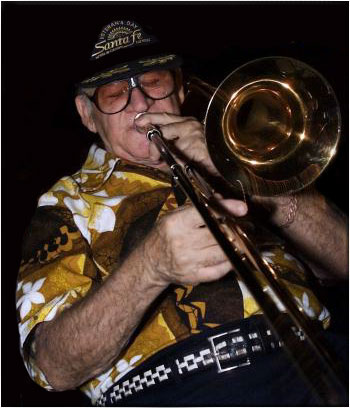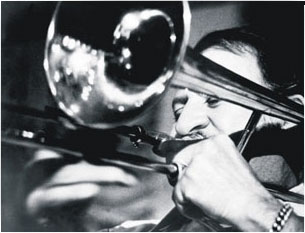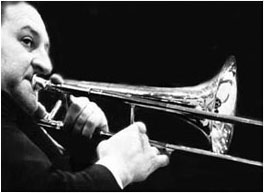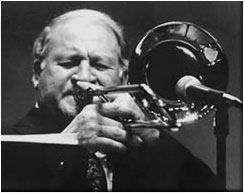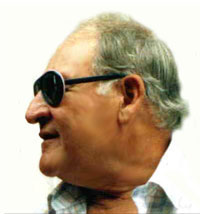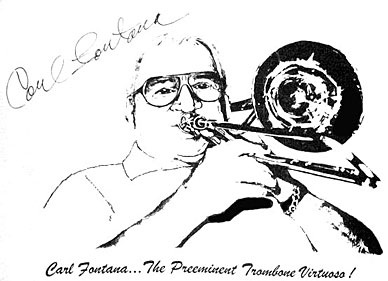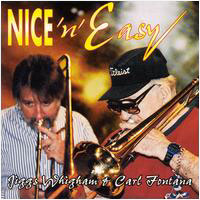|
Index
| Trombone Ensembles
| CD's
| Manufacturers
| Jazz Styles
| Jazz Clubs
| Jazz Festivals
| Trombone News
| Comments
| Contact
|
|||
|
|
|||
|
CARL
FONTANA
-
Fontana never looked back and no one has ever challenged his supremacy. His several disciples approached his speed and technical agility, but no one ever matched his sublime streams of improvisation.Herman was so impressed that when Urbie Green returned he kept Fontana in the band. The young man abandoned his studies for his master's degree and toured with Herman for the next two years.One day when Fontana was a child, his father, Collie, had walked into the house and placed a box in front of his son. "What's that?" asked Carl. "It's what you're going to play," his father told him, opening up the trombone case. The Fontanas lived in Monroe, Louisiana during the Depression (Carl was born there in 1928) and Collie supported his family by working as a plumber and by playing violin and saxophone in a band he inherited from another leader. His son joined the band and worked in it throughout his high school days as well as playing in the school concert orchestra. Fontana was always an athletic man and his first loves as a boy had been football, basketball and baseball. "Dad and I had a few run-ins about whether I was supposed to be playing music jobs on the weekends or playing ball in some tournament or other. He won all the arguments."A big man of imposing stature, Fontana was a benign and amusing companion when I interviewed him in Florida some years ago, but he could be intimidating when he felt like it. Many years ago, one of the sidemen in one of the big bands had been making unwanted suggestions to some of the other musicians' wives. Fontana approached him and spoke cordially. "You're leaving this band," he said. "Whether you go out vertically or horizontally is up to you."Fontana was awarded a degree in musical education at Louisiana State University in 1950 where he also played in concert and symphony orchestras. By the time he joined Herman the following year he had developed the unique way of combining a plump tone with the fast-tonguing of notes that caused a re-thinking of trombone techniques the world over.His two years with Herman gave Fontana a love for the big bands that never left him, and because he was such a proficient sideman and a good reader for a time his talent was buried in the ranks of the Lionel Hampton and Hal McKintyre bands.But in 1955 he joined the band of Stan Kenton. Kenton was under no illusions about Fontana's talents and brought him right out front as one of the band's major soloists. Kenton's band had earlier been something of a pretentious monolith but by the time that Fontana joined it had been considerably loosened up by soloists like Zoot Sims and Lee Konitz and, more importantly, by the arranger-composers Bill Holman, Gerry Mulligan and Gene Roland. Deployed against the ranks of powerhouse brass, Fontana's solos were breath-taking. He was featured on the perennial "Intermission Riff" but more importantly Holman wrote two specific features for him. The first was the fluent assault course for trombone called simply "Carl", whilst the second was a setting of "Polka Dots and Moonbeams", which exemplified Collie Fontana's advice to his son: "Whenever you play a ballad, play it as if you were talking to your best girl."Although Fontana had startled trombonists throughout the world, it was only when Kenton featured him on his 1956 tour of Europe that he conquered the general public. His modest manner at the microphone (Kenton let him introduce his own features) belied the pyrotechnics that followed and delighted audiences across the continent - but not in Britain where a ludicrous Ministry of Works ban still prevented American musicians playing here. British fans showed their devotion by taking the boat to Dublin where the Kenton galaxy was on glorious display.An ex-Kenton trombonist who had made an even bigger name for himself, Kai Winding, was able to tempt Fontana with money to join his band, which consisted of four trombones and a rhythm section. Then in December 1957, before moving to Las Vegas, he deputised for Bill Harris in the Woody Herman band. Las Vegas became Fontana's base, and he worked contentedly in mundane show bands there, leaving when called on to dazzle the rest of the world as a jazz soloist. In 1966 he toured the world on a US State Department tour with the Herman band, coming to London before touring in Africa for 12 weeks.From then onwards he was called regularly to festivals, tours and the newly emergent jazz parties to grace their all-star line-ups. He worked with Benny Goodman in Las Vegas in the mid-Sixties and became a key member of Supersax, a band devoted to re-creating the solos of Charlie Parker, in 1973. He was in the various bands that led eventually to the emergence of the World's Greatest Jazz Band in 1975. Here he showed his abilities to play convincingly in such Dixieland surroundings. "I'm just an old bebopper at heart," he had told me in Florida. Fontana co-led a group with the drummer Jake Hanna that recorded and appeared at festivals in 1975 and later toured Japan. Unusually, although he had appeared on so many recordings under other leaders, Fontana didn't make an album under his own name until 1985, when he led a quintet that included his long-time friend and musical associate Al Cohn. He had more good exposure when, during the Eighties, he appeared regularly on the National Public Radio show Monday Night Jazz. By the Nineties he had retired from regular work in Las Vegas and only toured as a jazz soloist. At this time he came to London to play at Ronnie Scott's in tandem with one of his disciples, Bill Watrous. In Las Vegas he continued to play for fun in a quintet that he co-led with the tenor player Bill Trujillo. One night, at the end of the evening, he turned to Trujillo and said "You'll have to take me home. I can't remember where I live." It was the onset of the Alzheimer's disease that was to lead to his death.
Photo right was shot by Carls friend Ed Boyer (Las Vegas bassist and photographer) After playing in Kai Winding's four-trombone band (1956-57), Fontana moved to Las Vegas but he has emerged on an occasional basis, touring with Woody Herman in 1966, recording with Supersax (1973), co-leading a group with Jake Hanna (1975), playing with the World's Greatest Jazz Band and appearing at jazz parties. Recorded in 1997, Nice 'n' Easy finds Carl Fontana joining forces with another veteran trombonist: Jiggs Whigham. Together, Fontana and Whigham form a two-trombone front line, and they have a solid rhythm section that consists of pianist Stefan Karlsson, bassist Tom Warrington, and drummer Ed Soph. These days, two-trombone attacks are a rarity, and anyone who has a high opinion of the sessions that trombonists J.J. Johnson and Kai Winding co-led in the '60s knows how regrettable that is. So, when two skilled trombone veterans like Fontana and Whigham get together, it is a happy event.
Jazz Profile Carl
Charles Fontana: July 28, 1928-October 9, 2003 Carl Fontana In the world of music, as in all of the arts, there are only a few truly original voices that emerge in each generation, and an even smaller number of those voices transcend their time to become a major influence and inspiration for succeeding generations. Carl Fontana was--and is through his recorded legacy--such a voice. Truly a master of his art, Fontana had the Mozartian quality of impeccability. As Mozart's scores were absent of corrections or deletions, Fontana's mellifluous solos were unscarred by errant notes. One of the most often heard remarks from Carl's peers has been "I've never heard him play a wrong note." A great contrapuntalist, Carl would weave lines that served as countermelodies to the tune, which he often did as an accompaniment to a colleague's statement of the melody. A study of his solos demonstrates that if all of his choruses on a tune could be simultaneously performed, the result would be a rich multi-lined tapestry comparable to the complex fugal compositions of Johann Sebastian Bach. As with all original voices, Carl Fontana spent little time emulating the solo styles of other jazz performers; he quickly developed a style that was uniquely his own. In his first recording with Woody Herman, "Mother Goose Jumps," he gives a clear tip of the hat to one of his great predecessors, Bill Harris, but by his second recorded solo on "Moten Swing," he had clearly moved on to establish his own mode of musical expression that is by now so familiar to Fontana fans. When
asked by interviewers, "Who were your major influences?"
Carl's response was usually that there was no one in particular
he tried to emulate. Among Fontana fans, there is a literal legion
of fellow trombonists who consider him to be a major influence
on their playing, often referring to him as possibly the greatest
jazz trombonist of all time. Every year that he performed for
UNLV's "76 Trombones + 4" concert, there would be a
cadre of trombonists who would travel from nearly all over the
world to perform with him and, of greater importance, hear him
weave his musical magic. The large ensemble that performed this
concert--most often numbering more than a hundred--was in large
part attributable to his presence. He is truly the "trombonist's
trombonist." Although Carl could readily sit down and write out the melodies and chord changes to any tune, he scrupulously avoided reading chord progressions, because he felt it interfered with his creativity. The results he got speak for themselves; his incredible ear and sense of time and phrasing--the things that made him a musical genius--allowed him to conjure solo after solo, each a pearl. Although educated at Louisiana State University, where he received a bachelor's degree and began working on a master's before joining the Woody Herman band, Fontana relied mostly on his natural instincts, as most highly creative artists do. Carl, who was loved for his great sense of humor as well as his musical talents, had a penchant for performing little-known ballads and used the unexpected, often "off-the-wall" tunes that he would turn into bossa novas. It was the latter that he would use as an outlet for his "tongue-in-cheek" wit, with tunes like "America the Beautiful" (from The Great Fontana album) and "If I Only Had a Brain" (on both the Live at Capozzoli's--The Carl Fontana Quartet and Nice 'n' Easy CDs). His discovery of obscure ballads led to a world-wide reputation as the source for such material. Musicians from around the globe would call Carl to check the chord changes or melody of an unfamiliar song, and he could immediately supply the requested information from his encyclopedic memory.
A man of few words--except in his wittier moments--Fontana was considered a "tough" interview by most journalists, too often giving one-word answers to their questions. This "shy" quality and his desire to be a home body resulted in a renown among his fans and colleagues while leaving him largely unknown to the general populace. Traveling not only didn't interest him, it was quite often the deciding factor in turning down gigs. In the spring of 1992, Carl was contacted by the Westdeutscher Rundfunk Jazz Orchestra (WDRF) of Cologne, Germany--a superb musical organization--and offered $5,000 plus all expenses to perform two concerts with them, one at a local jazz festival and the other at the International Trombone Workshop in Detmold. The primary work on which he was to be featured, along with Jiggs Whigham, was a multi-movement composition by noted composer/arranger Jerry von Rooyen. At the time, Carl insisted that I was his manager--a job for which I was not qualified either by skill or personality--and asked me to return a call for him to the WDRF management and tell them $5,000 was not enough money. The offered fee was raised to $6,000, but Carl also declined for the same reason. More calls followed with the fee rising finally to a begrudging $9,000 with the caveat that it would go no higher. Carl's response was to have me call and tell them that he would not be able to make the trip. Devastated by this information, since I was to give a research paper on Carl's solo work in Detmold, I asked him why he was turning down such a great offer to work with top notch musicians playing superbly written music. His answer was, "It's too far to go, and besides, I don't want to have to do all that reading of a new chart." In late 1991, Gerry Mulligan called Carl and told him that he was going to re-record the music from the classic jazz album Birth of the Cool, and would he be available for the date. According to Carl, his reply was, "Only if I get paid as much as you do!" Following a couple of ensuing phone calls, I was visiting with Carl at his house and asked him if he was going to make the recording date. He said, "No." When I asked him why he was turning down such an historically important session, his answer was, "It's too cold in New York this time of year." With such refusals great fame remains elusive, but Fontana preferred staying home where he could visit with his daughter Felicia and two sons Mark and Scott, as well as his grandchildren, who knew him only as "Popo." Fortunately for Fontana fans, Carl made several CDs during this last decade that have greatly enhanced the number of recordings available of his work. Unfortunately, he is no longer here to astound us with his constant flow of musical inventiveness and possibly worse yet, to no longer make us laugh. We should, however, feel extremely fortunate that he touched our lives, that we had the opportunity to experience firsthand true musical greatness, and that through his recorded legacy his genius will always be there to enjoy. Let's hope that he and his buddy Frank Rosolino keep on jamming on the other side until we can get there to hear them once again! PARTIAL
DISCOGRAPHY Ken Hanlon wrote the following short profile a few years prior to Carl Fontana's death. During
the second week of January (2000) while attending the International
Association of Jazz Educators (IAJE) Annual Conference, I was
standing in line in a fast-food restaurant when the two young
college men in front of me turned around and recognized my IAJE
T-shirt. They asked me how I was enjoying the conference, which
they were also attending. I responded that I was enjoying it very
much and that I was especially looking forward to interviewing
Al Belletto, whose big band was scheduled to perform at the conference,
for a biography of Carl Fontana on which I was working.
|

